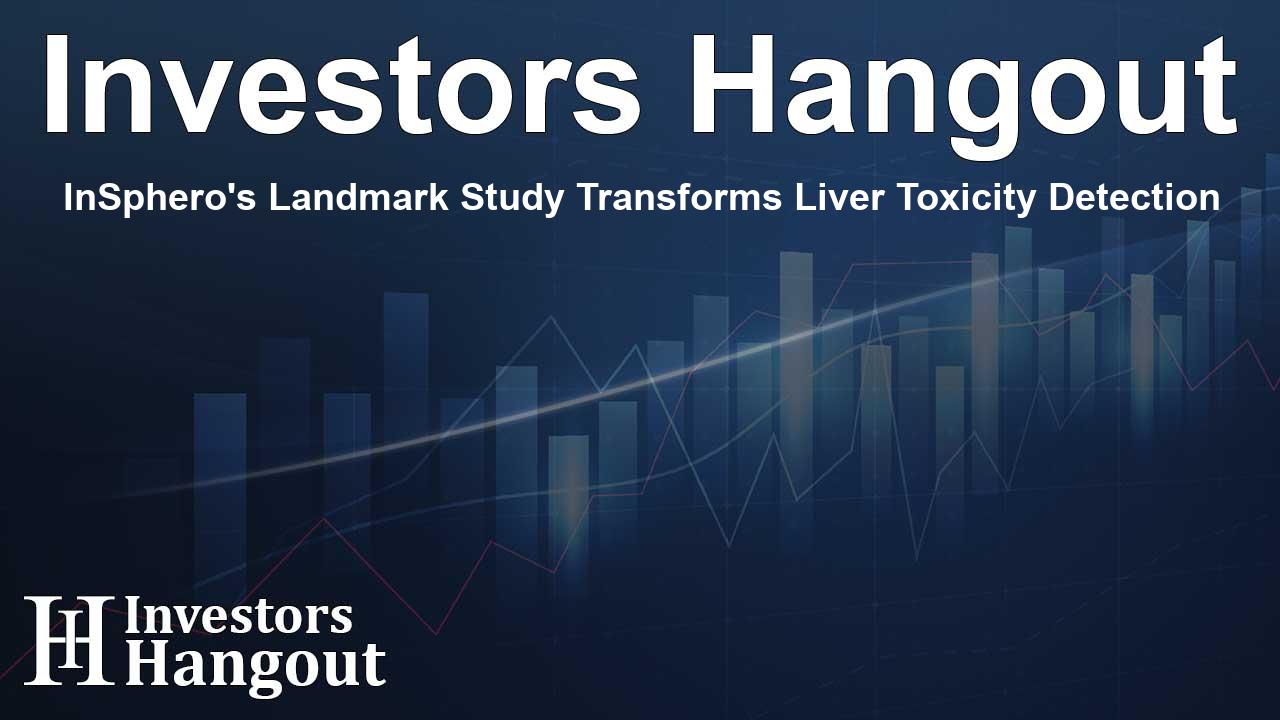InSphero's Landmark Study Transforms Liver Toxicity Detection

Revolutionizing Liver Toxicity Detection with 3D Technology
InSphero, an established leader in 3D cell culture technology, has collaborated with scientists from the U.S. Food and Drug Administration's National Center for Toxicological Research (NCTR) to publish a groundbreaking study. This research is the largest benchmarking effort to date in liver toxicology, utilizing their innovative 3D InSight™ Human Liver Microtissues. The study assessed the hepatotoxicity of 152 FDA-approved drugs, revealing that this advanced safety platform is essential in early-stage drug safety testing, thereby reducing the likelihood of costly late-stage failures.
Insights from the Benchmark Study
Published in the esteemed journal Toxicological Sciences, this peer-reviewed paper is a pivotal advancement in the field of drug-induced liver injury (DILI) prediction. DILI remains a critical cause for the discontinuation of drug development. By utilizing 3D InSight™ Human Liver Microtissues, InSphero's approach not only replicates human liver physiology more effectively but also ensures an impressive predictive accuracy: 80% of drugs withdrawn due to safety concerns were flagged correctly, alongside 89% of drugs classified as safe.
Importance of Predictive Accuracy
According to Dr. Jan Lichtenberg, CEO and Co-founder of InSphero, this collaboration signifies a breakthrough in the discipline of liver toxicology. Traditional preclinical and clinical safety testing often misses crucial indicators of liver toxicity. The unique synthesis of hepatocytes derived from multiple individuals provides unprecedented insights, highlighting the capabilities of the 3D InSight™ platform in identifying problematic compounds early.
Aligning with FDA Modernization Initiatives
In light of the FDA Modernization Act 2.0, this research underscores a meaningful transition towards human-based in vitro testing methodologies. As this paradigm shifts, InSphero’s 3D InSight™ Human Liver Microtissues emerge as a fundamental technology for modern drug safety evaluations, reducing dependency on animal trials while promoting the development of safer drug candidates.
Enhancing Safety Testing Efficiency
Dr. Madhu Nag, InSphero's Chief Scientific Officer, emphasizes the integrated approach of their liver safety platform, which marries biological accuracy with automation potential. The overall goal is to empower drug developers to make data-driven decisions early on, minimizing late-stage failures and facilitating faster, safer drug introductions to the market.
Providing Economic Benefits in Drug Development
The integration of predictive accuracy and scalability within InSphero’s technology is set to provide significant economic benefits for the pharmaceutical industry. With the ability to detect hepatotoxic compounds earlier in the testing pipeline, companies stand to save millions in preclinical costs and enhance overall R&D productivity.
Addressing the Industry's Challenges
Dr. Bruno Filippi, Vice-President of Liver Safety at InSphero, highlights the distinct advantages of using 3D liver microtissues. They deliver a physiologically relevant model maintaining the throughput of traditional 2D cultures, but with improved biological relevance. This uniqueness positions InSphero’s platform as an invaluable tool for early-stage safety testing, aiding in the identification of toxic compounds before incurring the costs of animal trials or clinical studies.
Conclusion: A New Era in Drug Safety Assessment
As the pharmaceutical industry grapples with escalating challenges regarding drug safety and efficacy, InSphero shines a light on innovative solutions that bring hope for the future. The groundbreaking findings not only bolster InSphero’s standing as a leader in drug safety assessments but also set a new standard for mitigating risks in drug development.
Frequently Asked Questions
What is the significance of the recent study by InSphero?
The study showcases the company's 3D InSight™ Human Liver Microtissues as crucial tools for predicting drug-induced liver injury (DILI), aiming to reduce attrition rates in drug development.
How does 3D technology improve liver toxicity testing?
3D liver microtissues recapitulate human liver physiology more accurately than traditional models, enhancing predictive accuracy for hepatotoxicity assessment.
What costs can pharmaceutical companies save with InSphero's platform?
By identifying toxic compounds early in the development process, companies can avoid millions in preclinical testing expenses and improve R&D efficiency.
How does this research align with current FDA initiatives?
This research supports the FDA Modernization Act 2.0, promoting a transition towards human-based testing methods over traditional animal testing approaches.
Who is leading InSphero's innovative efforts?
Dr. Jan Lichtenberg, the CEO and Co-founder, and Dr. Madhu Nag, the Chief Scientific Officer, are pivotal in advancing the company's mission to improve drug safety testing.
About The Author
Contact Thomas Cooper privately here. Or send an email with ATTN: Thomas Cooper as the subject to contact@investorshangout.com.
About Investors Hangout
Investors Hangout is a leading online stock forum for financial discussion and learning, offering a wide range of free tools and resources. It draws in traders of all levels, who exchange market knowledge, investigate trading tactics, and keep an eye on industry developments in real time. Featuring financial articles, stock message boards, quotes, charts, company profiles, and live news updates. Through cooperative learning and a wealth of informational resources, it helps users from novices creating their first portfolios to experts honing their techniques. Join Investors Hangout today: https://investorshangout.com/
The content of this article is based on factual, publicly available information and does not represent legal, financial, or investment advice. Investors Hangout does not offer financial advice, and the author is not a licensed financial advisor. Consult a qualified advisor before making any financial or investment decisions based on this article. This article should not be considered advice to purchase, sell, or hold any securities or other investments. If any of the material provided here is inaccurate, please contact us for corrections.
